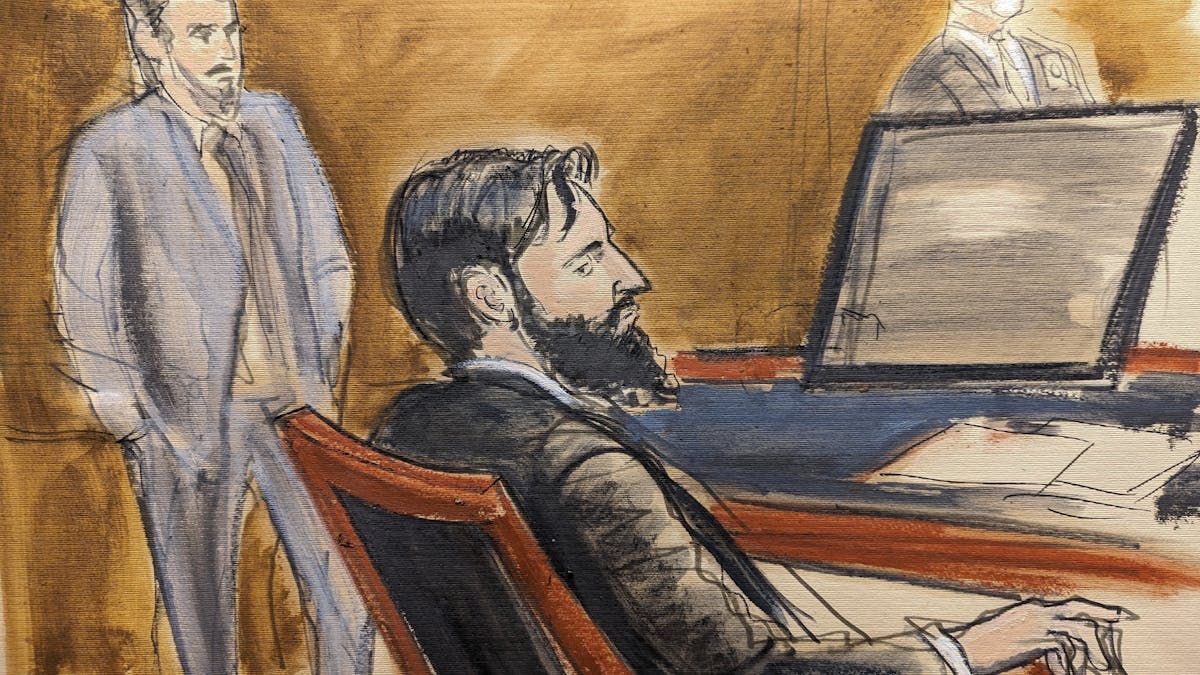Death Penalty Looms in a New York Courtroom
Jurors are set to bring in what could be New York’s first capital sentence since 1963.

The commencement of the penalty phase in the trial of a man convicted of killing eight people in a New York City bike lane rampage — Sayfullo Saipov, who was inspired by the Islamic State — surfaces the possibility that New York will see its first death sentence since 1963.
Saipov was found guilty on all 28 counts in a United District in New York. Sensing that a guilty verdict was a foregone conclusion, Saipov’s attorney did not call or cross-examine any witnesses at trial. A unanimous jury is required to levy the death penalty; just one dissenter means life in prison for Saipov.
The presiding Judge, Vernon Broderick, told the jury that it “is impossible for me to overstate the importance of the decision before you.” Saipov’s attack, which occurred on Halloween in 2017, claimed the lives of six tourists and two Americans.
Saipov drove a truck into a bike path on the west side of the West Side Highway at Pier 40 and mowed down his victims between there and Stuyvesant High School at Chambers Street. It was the deadliest terrorist attack at New York City since the Twin Towers fell.
One of the prosecutors in the case, Amanda Houle, argued that the death penalty is required because Saipov has “not abandoned his jihad, his fight,” and because he is “dangerous even in prison.” According to the New York Times, Saipov’s lawyer, Mark Stern, urged jurors to send him to a “harsh and impregnable prison in the middle of nowhere.”
The history of the death penalty in the Empire State is one of abolition and reinstatement. Most recently, an order signed by Governor Pataki reviving the practice via lethal injection was declared unconstitutional by the New York Court of Appeals, the Empire State’s highest judicial body.
Since 2007, death row has been empty, and in 2008 Governor Paterson issued an executive order mandating the removal of all death penalty equipment from state facilities. New York was the first state to execute a man, William Kemmler, via the electric chair, in 1890. The inventor Thomas Edison was an enthusiast.
Saipov’s execution is possible because he was tried in federal rather than state court. The killer was tried in federal court because of his link to foreign terrorism; the prosecutor, Jason Richman, described to the jury how Saipov requested the Caliphate’s black flag be hung in his hospital room after he “turned a bike path into his battlefield.”
If jurors do decide that Saipov’s life is forfeit, they will render a decision at odds with the policy of the Biden administration. While a campaign pledge to abolish the death penalty has as yet gone unfulfilled, a moratorium on executions is currently in place at the direction of Attorney General Garland.
If Saipov is convicted, he could be executed in the event the moratorium is lifted, or by a future president. According to the Death Penalty Information Center, there are 44 men currently on federal death row and more than 2,000 people await execution at the state level.
This approach stands in stark contrast to the one pursued under President Trump. The final six months of his administration witnessed 13 executions in federal cases. Those were the first federal executions in nearly two decades. According to the Associated Press, more people were executed under the Trump administration than in the 56 prior years, combined.
The death penalty has lived several constitutional lives. In Furman v. Georgia, from 1972, the Supreme Court ruled that the death penalty as applied in a set of state cases was unconstitutional, holding that those executions violated the Eighth Amendment’s ban on cruel and unusual punishment because of its disproportionate application to minority communities.
Four years later, in Gregg v. Georgia, the high court held that capital punishment was not per se unconstitutional and upheld Georgia’s renovated sentencing procedures, which remedied the earlier problem of arbitrary application.
The next year, in Coker v. Georgia, the justices ruled that for an execution to be constitutional, it must be proportional to the crime. Further rulings ruled out the ultimate punishment for minors and cases of child rape where the victim lives.
In seeking to forestall what prosecutors have called the “most severe penalty that the law provides,” Saipov’s attorney, Mr. Stern, told the jury that the “cycle of death has to stop somewhere.”

